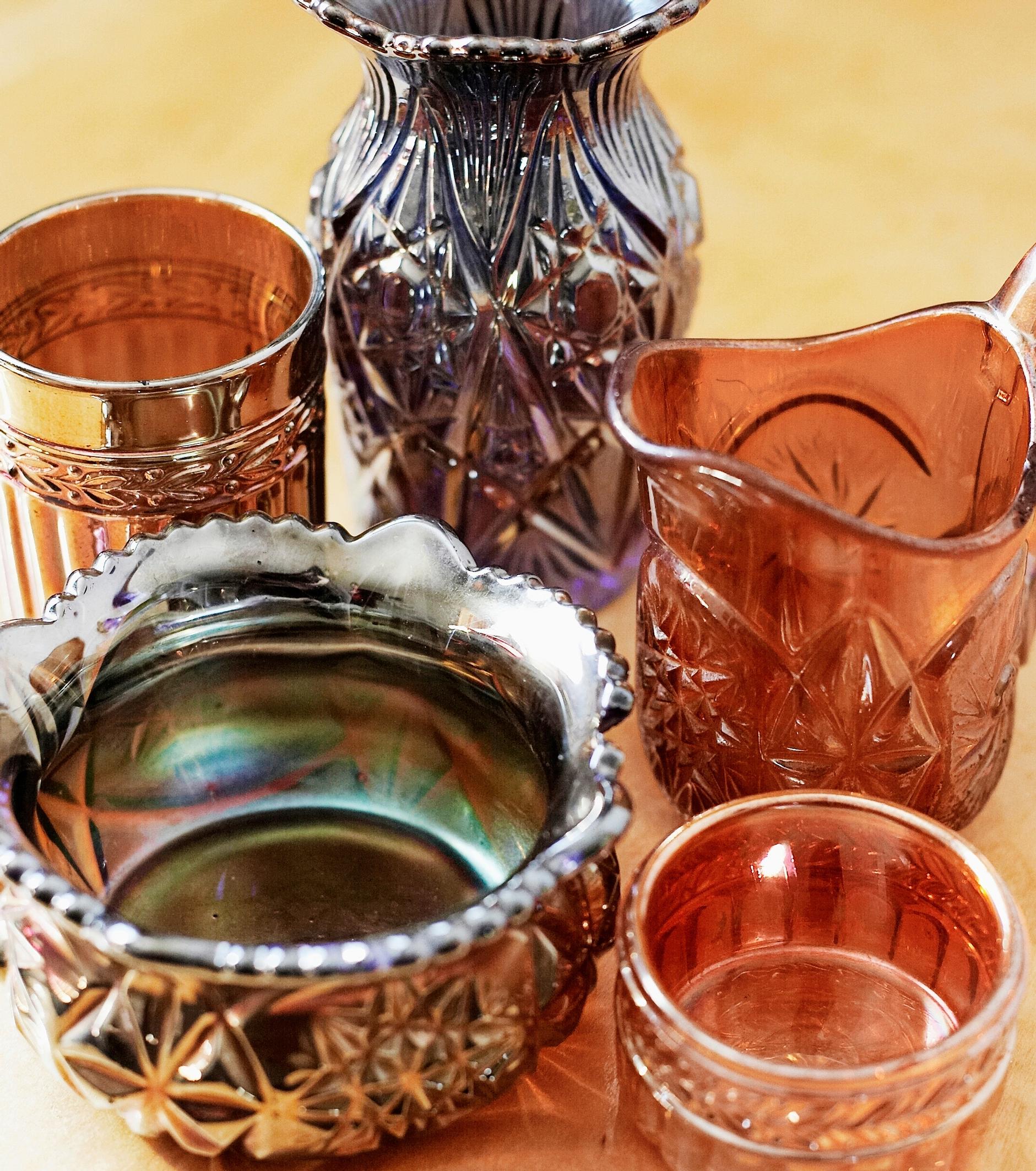
Carnival glass: is this iridescent collector’s favorite dangerous or safe to use?
The magic of carnival glass items lies in a special manufacturing technique that creates its signature luster—and has inspired this type of glassware’s Finnish name, “poison glass.”
Carnival glass saw its greatest popularity from the 1920s to the 1950s. It’s traditionally a type of pressed glass, distinguished from more typical pressed glass items solely by its captivating surface treatment. In Finland, many factories produced this style, especially Riihimäen Lasi.
In Finnish, carnival glass is sometimes called myrkkylasi, “poison glass”. The name is linked to the manufacturing process: the hot glass object is exposed to metal oxides, which are extremely harmful in vapor form. According to the Finnish Glass Museum, the metallic sheen can also be achieved by painting, and certain glass compositions naturally oxidize metal onto the surface. The good news is that you could even lick a finished poison glass piece without risk, as harmful elements no longer transfer from it.
A keen eye can spot distinct color variations in carnival glass. In Finland, carnival glass usually has a red or blue sheen: the blue version has a blue base glass, while the red version has a clear base.



